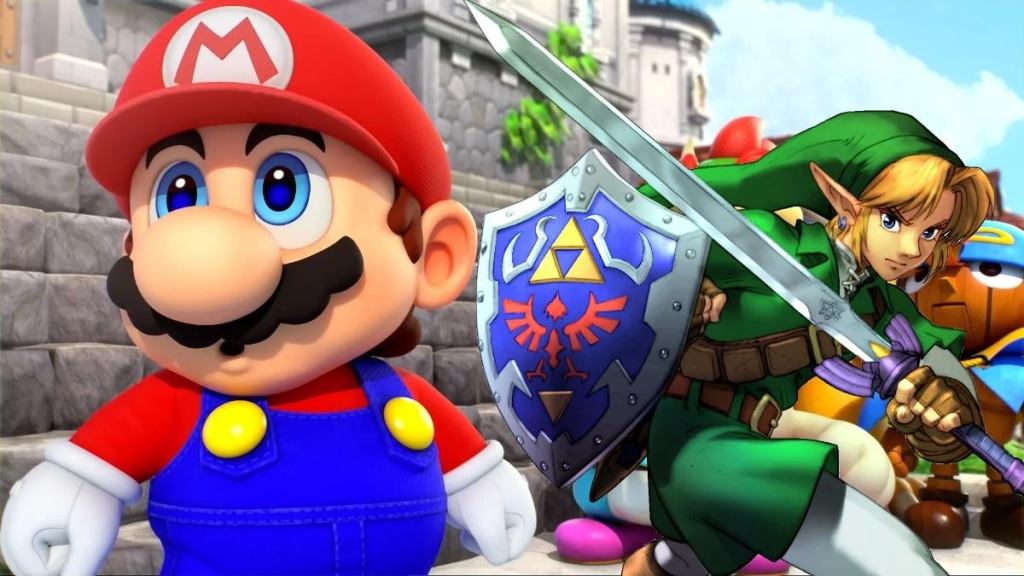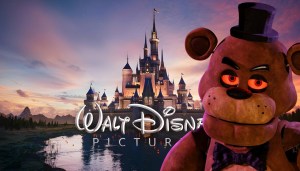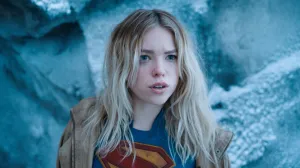Have you ever wondered what’s going on outside of Hyrule in The Legend of Zelda? What about the other places we don’t see outside the Mushroom Kingdom from Super Mario? Pokémon games have regions, but they’re all connected and probably do not make up the entirety of a planet. Hyrule and the Mushroom Kingdom don’t, either, so what’s going on elsewhere? Video game worlds are often self-contained and don’t connect to much of anything else, and it’s generally understood that that’s all there is. What if that wasn’t the case, though? What if one game was taking place in a different area of a fictional world that another game is taking place in? When it comes to the aforementioned Nintendo staples, it might actually be possible.
Videos by ComicBook.com
There Are Clear Connections Between the Three Nintendo Franchises

If you’ve ever played The Legend of Zelda series, you’ve undoubtedly noticed some fun Easter eggs for Nintendo’s other massive franchise, Super Mario. For example, there’s a clear portrait of Mario in A Link to the Past. There are paintings seemingly from Super Mario 64 in Ocarina of Time. In the 3D remake, there are even green warp pipes. Talon and Ingo seem to loosely resemble Mario and Luigi. Perhaps most notably, the Happy Mask Salesman in Majora’s Mask has a Mario mask on his pack.
That is also where another Pokémon Easter egg comes in. The salesman has a Keaton Mask on as well, and while it’s not a one-to-one replica, it is very reminiscent of Pikachu. And at the time of Majora’s Mask‘s release, there were only two Pokémon generations, so Pikachu was still easily the fan favorite. In Pokémon Red and Blue, one of the game consoles in a house has the name “Mario” on it. The music for Route 24 is also very reminiscent of the level music from Mario and Wario.
All of these could just be fun Easter eggs since they all share the same parent publisher, but they could also be more. The real evidence of these three series sharing a fictional planet is the crossover in enemies between Mario and Zelda. Blooper, Boo, Bob-omb, Chain Chomp, Cheep Cheep, Goomba, Thwomp (regular, Mega, and Spiked), and Piranha Plant all appear in Mario and Zelda games.
That’s a little bit harder to ignore, unfortunately. It’s probably true that Nintendo shared assets to make game development a little easier, but that’s the boring, extra-universal answer. The in-universe explanation is that these have a connection and that the games may all be taking place in the same universe.
Fun Setup by Nintendo or Just Pure Coincidence?

The real question is whether or not this is a fun setup by Nintendo or if it’s just coincidental. Nintendo did not, in all likelihood, ever consider that Pokémon, The Legend of Zelda, and Super Mario were all connected in any way, shape, or form. But did they want fans to consider the possibility? Ultimately, we’ll never know, but it certainly seems plausible.
Some of the crossovers can be explained. Nintendo has reused assets before, most notably using character models and more from Ocarina of Time to help speed the process up for Majora’s Mask. Is it so unreasonable to think that they might’ve also used enemy assets they already had access to? Not at all, and it makes sense since most of the crossover enemies came when game development was much harder than it is today.
However, some of them cannot be explained as crimes of convenience. The Mario mask was not at all a part of Ocarina of Time, so it was a purposeful, pointed inclusion to refer to the other series. The Keaton Mask is, too. The Mario paintings in Ocarina of Time are also clearly not to save time or cut corners.
Nintendo’s never going to say anything about this because it’s not worth the time. It is difficult to reconcile the timelines of all the games, especially since The Legend of Zelda has the most convoluted timeline ever, and Super Mario hardly has one at all. However, it’s definitely not out of the realm of possibility that your battling with Cynthia for Sinnoh, Link’s fight with Ganon, and Mario’s attempt to save Peach from Bowser are all happening relatively nearby to one another. It would help explain Super Smash Bros., too.
What do you think? Was Nintendo just having a bit of fun? Is it possible these three series share any connection? Let us know in the comments below!









